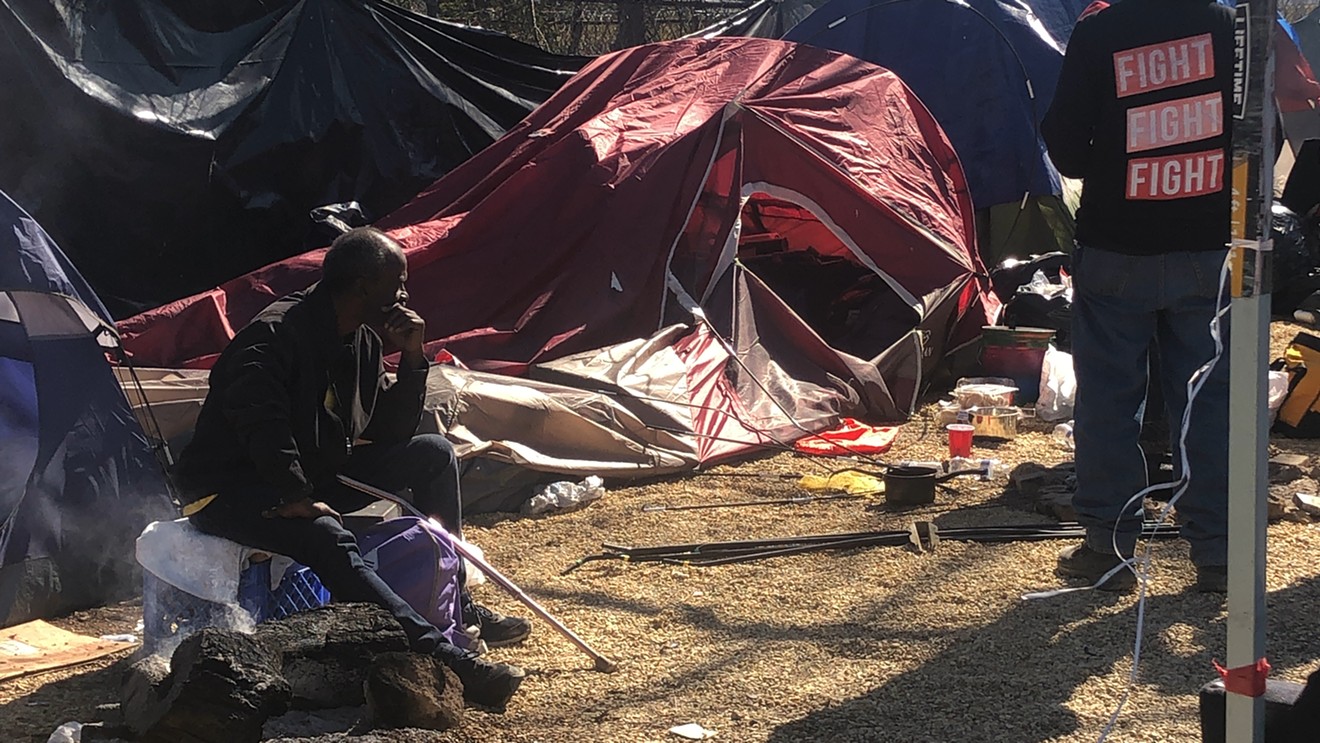The findings of the census were presented during the 2021 State of Homelessness Address on Tuesday.
“We cannot walk away from today without recognizing and naming the fact that systemic racism is reflected in homelessness. Black men are disproportionately represented," Peter Brodsky, the new chair of Metro Dallas Homeless Alliance, said at the address. The alliance is the lead agency for the homeless response system in Dallas and Collin counties.
“We are digging deeper into this metric to examine racial disparity in these numbers,” Brodsky said. “We know that it takes African Americans longer to get into housing, and we are working hard to understand where exactly in the system they are being treated differently."
The U.S. Department of Housing and Urban Development requires communities that receive certain federal grants intended to combat homelessness to count sheltered homeless individuals annually. Unsheltered counts are required every other year, but many counties, including Dallas and Collin, do both annually.
Usually, Metro Dallas Homeless Alliance gathers more than 1,700 volunteers to be trained to conduct the "Point-in-Time" count in a single night each year. Cities across the country commonly conduct this survey on a single morning or night in January, hoping cold temperatures will drive more people into shelters, making them easier to count.
During the pandemic, however, HUD sought to reduce close physical contact with the people being counted. Only Metro Dallas Homeless Alliance’s street outreach teams and members of the city’s Office of Homelessness Solutions took part in the count this year.
Additionally, the count was conducted over a two-week period from Feb. 18 to March 3, and the number of people conducting it was reduced to about 100, said David Gruber, development and communications director at the alliance. Gruber said they usually gather a plethora of different data sets during these counts. This year HUD was only looking for an answer to one question: Did homelessness increase, decrease or stay the same during the pandemic?
The 2021 Point-in-Time data can be found here.
The sheltered count included people staying in emergency shelters, transitional housing units and safe havens on Feb. 18. The teams also walked under bridges, to homeless encampments and abandoned buildings to find unsheltered individuals. People doing the counting reported seeing about the same number of families as in years prior, but they were in more dire situations.
The in-shelter numbers are higher than in previous years because Winter Storm Uri drove many otherwise unsheltered homeless people into warming stations. As a result, these individuals were categorized as staying in emergency shelters. The report estimates that 600 people counted in warming stations would have otherwise been on the streets.
These changes make 2021 data harder to compare with data from previous years. Despite this, the numbers still show a need for more affordable housing in the Dallas area, Brodsky said.
The count found a total of 4,570 homeless individuals in Dallas and Collin counties, a record level the area. Last year, the number was slightly lower, at 4,471. Around 90% of the individuals this year were in Dallas County.
About a third of those counted were on the streets or other places not meant for human habitation. More than half were in emergency shelters on the night of the count.
About 40% of the unsheltered individuals counted reported being homeless for one to three years. Another 37% reported being homeless for three years or longer. A smaller number of people, 7%, reported being homeless for less than three months.
As for age, 90% of people surveyed were over 24 years old. A small portion were under 18, but all of those people had shelter. About 13% of the total homeless population met the HUD definition of chronic homelessness and are given priority for permanent housing.
Some groups, like veterans and those with serious mental illness or substance abuse issues, are separated into subpopulations for the count.
About 13% of the veteran homeless population were experiencing chronic homelessness. A fifth of the homeless veteran population is unsheltered.
Nearly a quarter of homeless adults had self-reported experiencing serious mental illness. A fifth of them reported substance abuse disorders. However, the report notes that these numbers may be artificially low due to stigmas surrounding substance abuse and mental illness.
Because of the pandemic, the Department of Housing and Urban Development allowed municipalities to opt out of the point-in-time counts. For example, Denton County opted out of the unsheltered count, only counting homeless people at agencies they visit regularly. However, increases in homeless populations were recorded in other regions that participated in the count this year. In California's Kern County, home to Bakersfield, the homeless population grew by 27%, according to the NBC affiliate KGET.
An annual nationwide survey of the homeless found that the number of people in the U.S. living on the streets or in temporary shelters, 580,000, increased for the fourth year in a row. These numbers are pre-pandemic. With the broken data sets, HUD told The New York Times that the effect COVID-19 had on the homeless in the U.S. may not be known for years.
To better tackle homelessness in Dallas and Collin counties, the Metro Dallas Homeless Alliance announced the formation of what they’re calling a “Homeless Collaborative.” It will comprise organizations, nonprofits and city leaders who will focus on more targeted goals, such as ending veteran homelessness.
During the presentation at Tuesday’s address, City Manager T.C. Broadnax said the collaborative was important because "the silos that we used to operate in, they were no longer going to allow us to have meaningful impact when it came to addressing homelessness."
By forming the collaborative, they hope to tear down the walls between service providers and their partners to help reach their ultimate goal of ending homelessness.
2021 State of Homelessness Address Reimagined from Metro Dallas Homeless Alliance on Vimeo.












